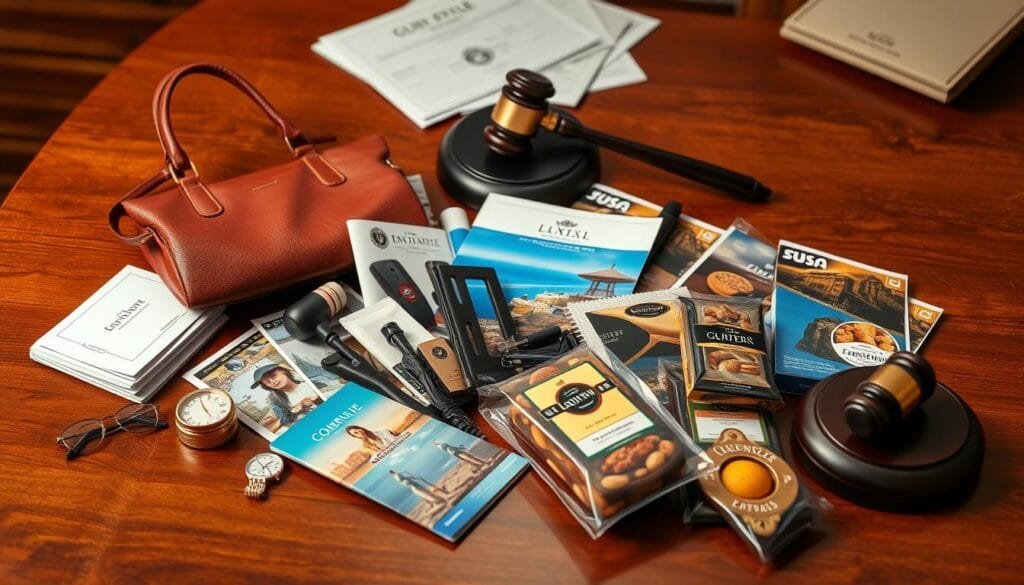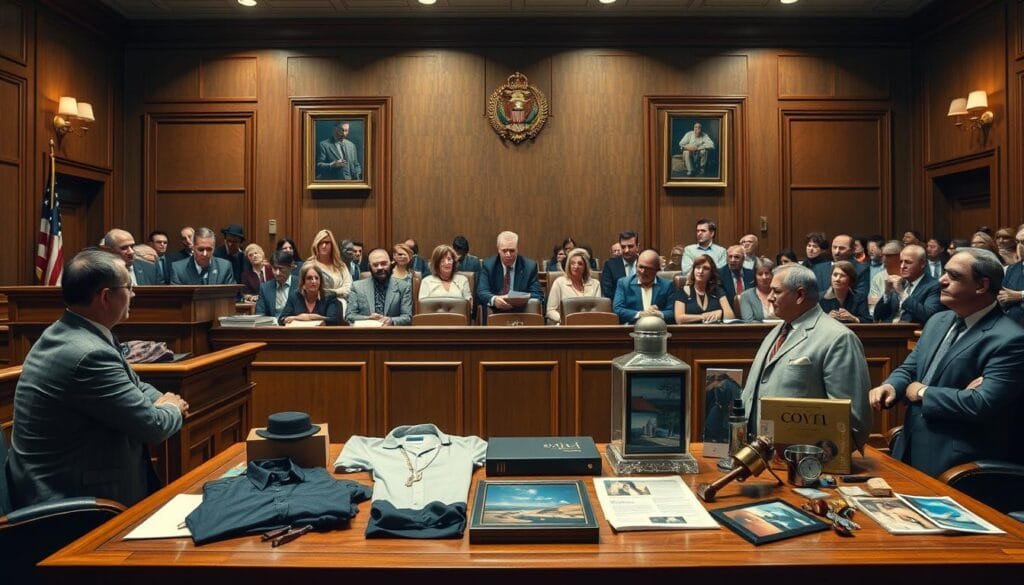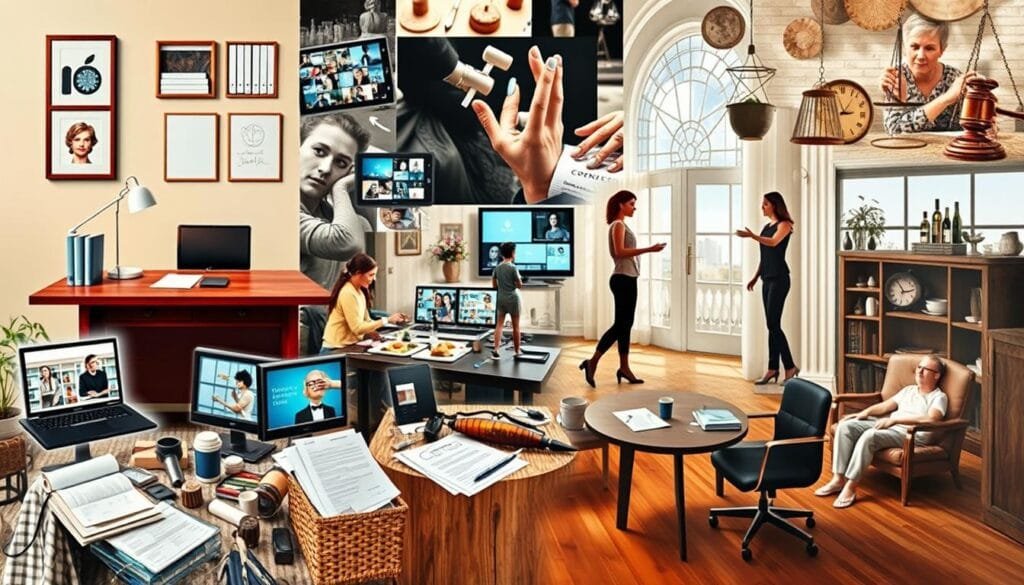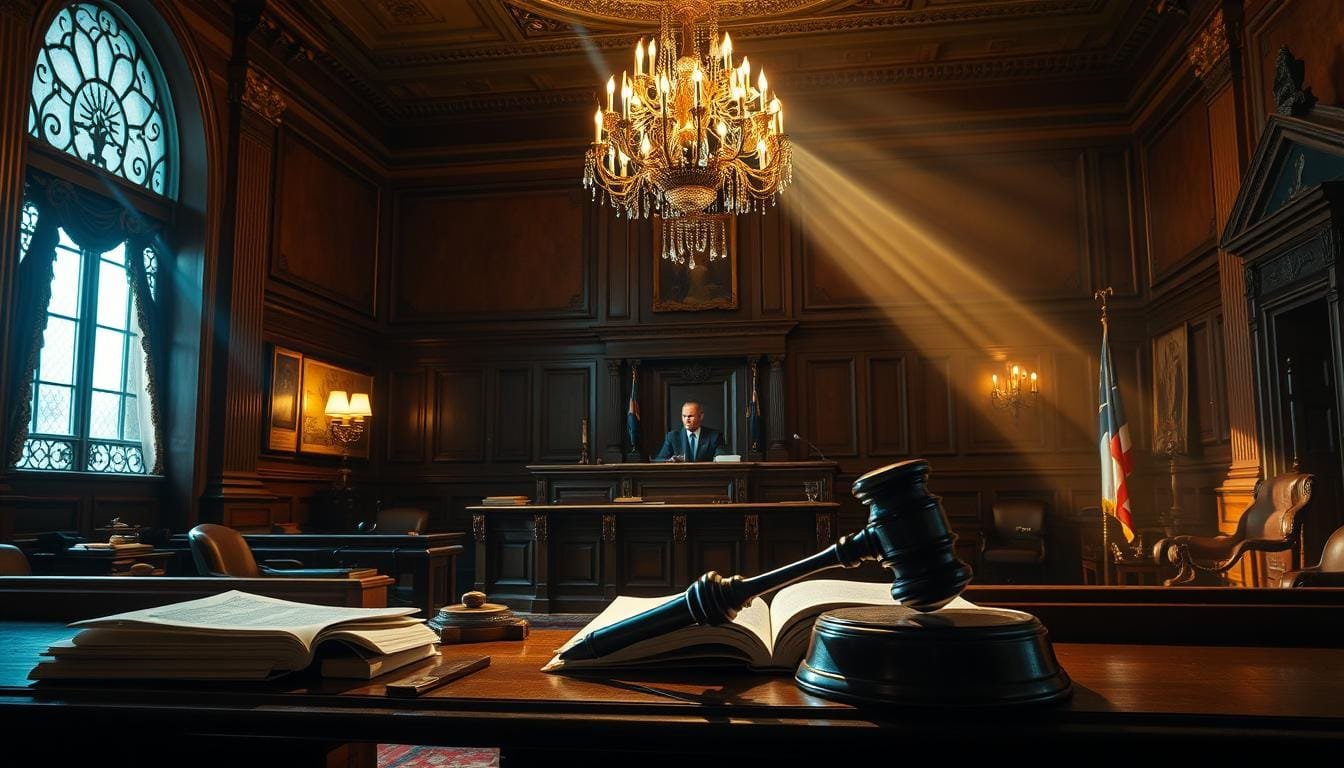Lifestyle evidence is now a common *courtroom strategy*. It involves sharing details about a person’s daily life, money matters, social life, and relationships. Lawyers use this info to make a detailed picture that can sway court outcomes. Here, we explore why lawyers bring up lifestyle in court and its big impact.
In criminal courts, dealing with serious crimes like assault and murder, lifestyle evidence is key. It helps show or question motives and actions. Civil courts, handling issues like family law and disputes over money or property, also rely on lifestyle details. They use them to figure out things like financial disputes or divorce cases.
Using lifestyle evidence isn’t just about showing what kind of person someone is. It boosts other evidence and helps tell a story that can influence the jury. It’s a strong tactic when linked with different evidence at trial.
Key Takeaways
- *Lifestyle evidence* plays a crucial role in both criminal and civil court cases.
- Such evidence helps in forming a comprehensive and persuasive narrative.
- It can influence the jury’s perception and support other evidentiary elements.
- Detailing lifestyle aspects is strategic for showcasing financial and social habits.
- Understanding the implications of presenting personal data in court is essential.
Understanding the Role of Evidence in Court
Evidence is crucial in the courtroom, making sure trials are fair and based on facts. It provides a solid foundation for legal decisions. Over time, our grasp of evidence has grown, thanks to experts and improvements in practices.
Types of Evidence
We use many kinds of evidence in court to prove facts or support arguments:
- Testimonial Evidence: Statements from witnesses under oath. Their truthfulness greatly affects the trial’s outcome.
- Documentary Evidence: Paper or digital records used to show certain truths, like contracts or medical files.
- Physical Evidence: Real items, for instance, clothing or weapons, that provide solid proof.
- Demonstrative Evidence: Items such as charts or models that help explain facts or witness accounts.
- Circumstantial Evidence: Evidence that suggests a fact indirectly, needing careful thought to make connections clear.
Importance of Reliable Evidence
The trustworthiness of evidence is key in legal cases. Laws make sure only solid evidence affects verdicts. It has to be relevant, important, and allowable. Good evidence comes from reliable sources, is gathered properly, and is presented fairly.
There’s a big difference in how evidence is treated in different legal traditions, noted by scholars like Damaška and Wigmore. Their research has helped us better understand how to find facts in court. Reliable evidence ensures our legal system works justly and fairly.
| Type of Evidence | Description | Examples |
|---|---|---|
| Testimonial | Witness statements under oath | Eyewitness accounts, expert testimony |
| Documentary | Written or printed materials | Contracts, emails, business records |
| Physical | Tangible objects | Weapons, blood samples, clothing |
| Demonstrative | Items that illustrate facts | Charts, videos, models |
| Circumstantial | Indirect evidence requiring inference | Behavior patterns, financial transactions |
How ‘Lifestyle’ Relates to Evidence
Lifestyle evidence is key in legal battles. Spending habits, living situations, and social life shed light on personal character. These factors matter in custody and alimony or when assessing someone’s character.
Financial records are a core example. They’re vital for determining alimony by showing incomes, assets, and expenses. This includes evidence of earnings like paychecks and tax filings. In Rich v. Rich (PA, 2009), such details were crucial for setting child support.

Medical files also matter, giving info on health and costs. Prenuptial agreements show financial plans and were crucial in Ayres v. Ayres (Wis, 1999). A lifestyle analysis looks at expenses and online activity to understand living standards during marriage.
Now, social media is critical in family law. Sites like Facebook and Twitter offer insights into personal lives. Lawyers suggest staying clear of social media during divorce. Posts can unintentionally provide evidence against you in court.
Several landmark cases highlight the impact of lifestyle evidence on court decisions:
| Case | Details | Outcome |
|---|---|---|
| Rich v. Rich | Father’s income: $9,000,000 – $10,000,000; assets: $40,000,000 | Father ordered to pay $15,792 per month in child support |
| Brind’Amour v. Brind’Amour | Professional hockey player; Initial agreement: $15,000 per month | Support reduced to $9,147 per month |
| Strahan v. Strahan | Professional football player; base support: $35,984 per year | Additional “needs” of $200,000 annually deemed arbitrary |
| Ayres v. Ayres | Father’s income: $500,000 annually | Child support set at $30,000 per year; statutory amount deemed unfair |
| Maturo v. Maturo | Father’s salary: $200,000 plus bonuses | Supreme Court reversed trial court’s decision on support payments |
Lifestyle evidence seriously impacts court outcomes. It shapes how cases are fought and judged.
The Strategic Use of Lifestyle Evidence in Court
Lifestyle evidence plays a key role in court, especially in affecting the jury’s views. It’s often seen in personal injury, divorce, and custody cases. Here, it can greatly change the case’s outcome.
Impact on Jury Perceptions
Lifestyle evidence can deeply affect how the jury makes decisions. Social media details can reveal much about someone’s behavior and credibility. For example, in personal injury cases, showing the plaintiff doing physical activities can challenge their injury claims. It makes the jury question their honesty.
According to the American Academy of Matrimonial Lawyers, 80% of divorce attorneys see more cases where social media matters. Evidence from online can show a person’s actions more fully. It can affect views on parenting or the extent of claimed damages.

Supporting Other Pieces of Evidence
Lifestyle evidence can also back up other evidence in court. Social media times and locations can confirm or deny event timelines. For example, a 2016 court found that a husband’s online behavior counted as cyberstalking. This supported domestic abuse claims.
It’s vital to prove social media evidence is real and unchanged. This makes sure it’s reliable when used with other evidence. Lawyers have to weigh its value and potential bias. They also need to protect privacy rights. Using lifestyle evidence well is complex but impactful in legal strategy.
Lifestyle evidence doesn’t just influence how the jury thinks. It also supports other evidence in court. Its effect is clear, highlighting the importance of careful evidence collection and use in making a strong case.
why did they play lifestyle in court
Looking into why lifestyle evidence is used in court shows its important role in legal fights. A key example is the trial of rapper Young Thug and his co-defendants. Initially, twenty-eight people were charged, including Gunna who accepted a plea deal. Later, only six, including Young Thug, went to trial. This trial is set to last from six to nine months, starting in November 2023.

In this major case, the prosecution used seventeen sets of lyrics as evidence. They linked the defendants’ songs to alleged crimes. This sparked debates on whether the lyrics showed real criminal intent or were just artistic. The use of lifestyle evidence here aimed to give jurors a broader view of the accused’s lives and beliefs.
The Hansberry v. Lee case is another example where lifestyle played a role in court. It dealt with housing discrimination and influenced the play “A Raisin in the Sun.” Here, a family’s experiences with racism in housing helped challenge unfair laws and set a new legal standard.
A study by the Guardian revealed 240 cases in the UK where lyrics were used as evidence over three years. Support from big names like Jay-Z and Meek Mill has pushed for changes in how lyrics are used in court. California made a big move by banning lyric evidence in state trials in September 2022. This highlights the ongoing debate over lifestyle evidence in the legal world.
In Young Thug’s trial, the use of lifestyle evidence was strategic, not just for show. The prosecution listed 737 witnesses to build a detailed story. They aimed to link lifestyle details with alleged crimes. Their goal was to influence the jury by showing the societal and cultural backgrounds of the defendants.
This gives us insight into the use of lifestyle evidence in court. It’s more than just a tactic; it’s a meaningful part of building cases and shaping outcomes. It can spotlight behavioral patterns or fight against discrimination. The influence of lifestyle evidence on legal strategies is deep and far-reaching.
Gathering and Presenting Lifestyle Evidence
In legal cases, showing lifestyle evidence is key. It helps build a strong argument. Important evidence and readying witnesses can change a trial’s outcome.
Identifying Relevant Evidence
Finding important lifestyle facts for a case takes hard work. For example, in the Menendez trial, defense showed photos from Erik Menendez’s sixth birthday. They depicted family life. Medical records, without direct abuse evidence, provided essential background. This strategy of gathering detailed lifestyle information builds a strong defense narrative.
Looking at digital footprints and personal documents is useful. In the Menendez trial, specialists examined the wills on the family’s computers. This revealed their financial situation. The Menendez wealth, around eight million dollars, helped explain family motives and relationships.
Preparing Witnesses
Ready witnesses is vital for showing lifestyle evidence well. The defense had relatives, friends, and others talk about the Menendez brothers. This offered a full view and made the brothers more relatable to the jury.
Lyle and Erik Menendez’s emotional statements were powerful. Lyle said his father assaulted him. Erik claimed the murders were a response to this abuse. These kinds of personal stories need a lot of witness preparation. Witnesses must speak clearly and handle the pressures of court.
| Aspect | Detail |
|---|---|
| Family Wealth | Estimated at eight million dollars |
| Potential Jurors | Over 500 screened |
| Emotional Testimonies | Lyle and Erik discussing abuse |
| Photographic Evidence | Photos from Erik’s birthday party |
Conclusion
In summarizing courtroom strategies, lifestyle evidence is key in legal battles. It gives a full picture of those involved. Our article showed how lifestyle evidence changes the court’s view. For example, a case ended on May 15, 2024, with five Justices. They saw how lifestyle evidence made the case clearer.
Lifestyle and finance details can tip justice’s scales. The Court of Appeal’s ruling on the Ahmeds showed this power. They found about 10% of sales were illegal, earning £3,129,921. The judge said Mr. Ahmed owed £144,192 and Ms. Ahmed £57,007. They also looked at a £635,789 loan.
Lifestyle evidence’s power is in showing the truth directly. Lawyers can use it to make stronger cases in court. As we end our talk, remember: while powerful, we must collect and show lifestyle evidence carefully. Its correct use not only helps in summarizing courtroom strategies but secures fair verdicts in court.
FAQ
What are some common courtroom strategies for presenting lifestyle evidence?
Courtroom strategies for lifestyle evidence focus on showing behavior patterns over time. They also involve backing up statements with solid proof. Plus, it’s vital to connect the lifestyle evidence directly to the case claims.
How is lifestyle evidence used in the court to support a legal argument?
Lifestyle evidence gives a detailed look at someone’s habits and actions. This can prove or dispute trial claims. It covers things like money records, social media use, and personal stories.
What types of evidence can be presented in a courtroom?
In court, evidence can vary from physical pieces, witness stories, to documents, and demonstration materials. Each one has a distinct role in forming a case. They must all be allowed by the court.
Why is reliable evidence crucial in legal proceedings?
Having reliable evidence is key to maintaining the trial process’s integrity. It helps the jury decide fairly and keeps the justice system upright. Unreliable evidence can wrongly convict or acquit someone, harming public trust.
How does ‘lifestyle’ relate to evidence in court?
‘Lifestyle’ evidence offers a deep dive into someone’s daily life, money situation, and social habits. It shapes how a jury sees things and adds context to the evidence shown in court.
What is the impact of lifestyle evidence on jury perceptions?
Lifestyle evidence can greatly influence what a jury thinks. It can make the person in question more relatable or more suspicious. It tugs at emotions, leading jurors to form opinions on the person’s nature and trustworthiness.
How can lifestyle evidence support other pieces of evidence?
Lifestyle evidence adds more detail to other evidence. For example, spending habits can underline reasons for actions or intentions. It helps shape a more complete story about the case.
Why did they play lifestyle evidence in court?
Lifestyle evidence was used in court to show behavior trends, build credibility, and add context to the case’s story. This can greatly influence what jury members decide.
What methods are used for gathering lifestyle evidence?
To collect lifestyle evidence, one might look at money records, sift through social media, watch someone’s movements, or talk to their friends and family. These methods compile a full profile of the person involved.
How should witnesses be prepared when presenting lifestyle evidence?
Preparing witnesses involves making them familiar with the evidence they’ll discuss, practice their statements, and remind them about the value of truth and clear expression. This gets them ready to share their information in a strong and persuasive way.
